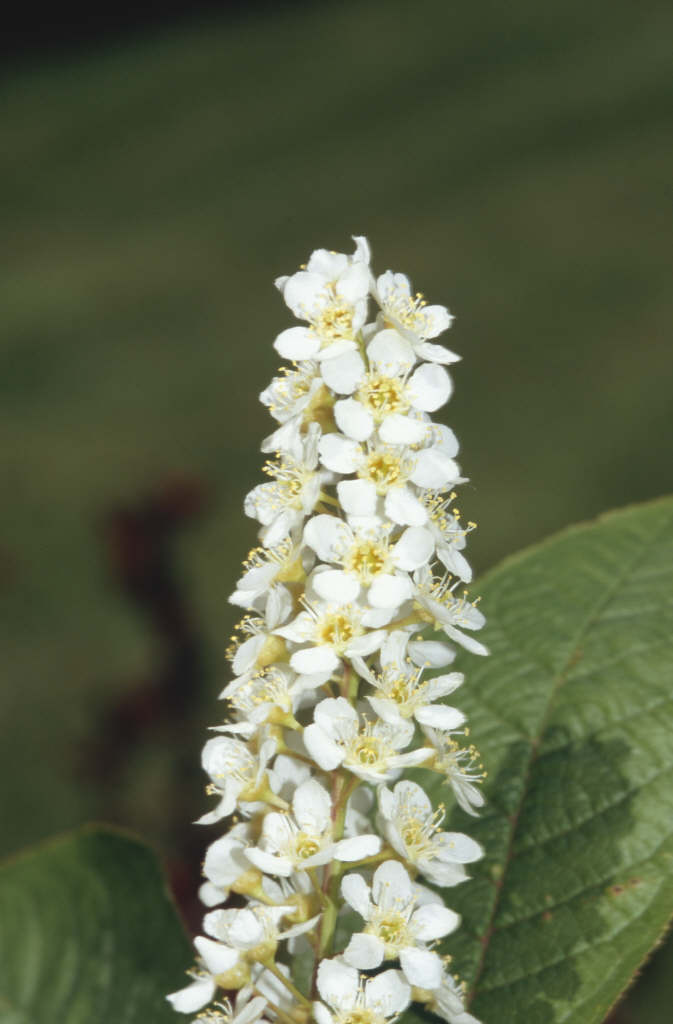Prunus padus
bird cherry
A large deciduous tree with toothed, ovate leaves turning yellow in autumn, and pendant racemes of frgrant white flowers 1cm wide in late spring, followed by small, bitter black fruits
Other common names
black dogwoodcommon bird cherry
see moreeggberry
hagberry
heckberry
hedgeberry
hog cherry
hackberry

Buy this plant
Size
Ultimate height
Higher than 12 metresTime to ultimate height
20–50 yearsUltimate spread
4–8 metresGrowing conditions
Moisture
Moist but well–drained, Well–drainedpH
Acid, Alkaline, NeutralColour & scent
| Stem | Flower | Foliage | Fruit | |
| Spring | White | Green | ||
|---|---|---|---|---|
| Summer | Green | Black | ||
| Autumn | Yellow | |||
| Winter |
Position
- Full sun
Aspect
East–facing or South–facing or North–facing or West–facing
Exposure
Exposed or Sheltered Hardiness
H6Botanical details
- Family
- Rosaceae
- Native to GB / Ireland
- Yes
- Foliage
- Deciduous
- Habit
- Bushy
- Genus
Prunus can be deciduous or evergreen trees or shrubs with showy flowers in spring, and often good autumn foliage colour. Some have edible fruit in autumn, and a few species have ornamental bark
- Name status
Correct
- Plant range
- Europe, W Asia to Korea and Japan
How to grow
Cultivation
Grow in moderately fertile soil in full sun
Propagation
Propagate by seed, chip budding or grafting, although softwood cuttings in early summer with bottom heat can also be successful
Suggested planting locations and garden types
- Cottage and informal garden
- Wildflower meadow
- Wildlife gardens
Pruning
Pruning group 1. Prune in mid-summer if silver leaf is a problem
Pests
Susceptible to damage from aphids, caterpillars and bullfinches
Diseases
May be affected by silver leaf, bacterial canker and blossom wilt. High Risk Host for Xylella fastidiosa
Love gardening
Sign up to receive regular gardening tips, inspiration, offers and more
View our Privacy Policy
Get involved
The Royal Horticultural Society is the UK’s leading gardening charity. We aim to enrich everyone’s life through plants, and make the UK a greener and more beautiful place.